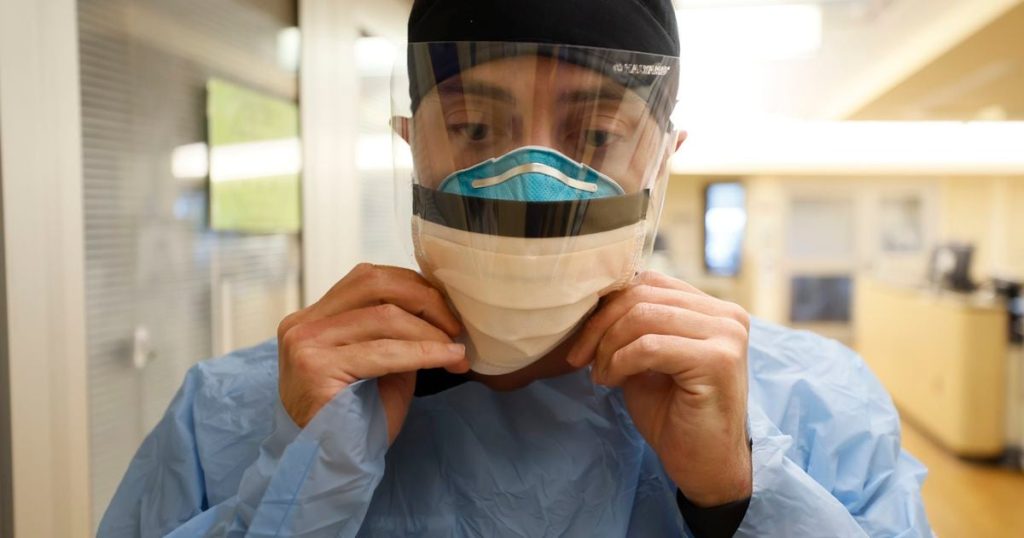“Right now, we’re at 22% positivity rate and the trend is going up,” Mannepalli said. “We’re definitely seeing an increase.”
The Centers for Disease Control and Prevention no longer tracks the number of COVID-19 cases, but estimates trends in the spread of the virus based on emergency room visits. According to the CDC, for the week ending July 13, Georgia reported that 1.1% of emergency department visits were diagnosed with COVID-19.That’s up 40% from the previous week, a high percentage that reflects an increase in a small number of emergency department visits. Nationwide, 1.6% of all emergency department visits were due to COVID-19, up 16% from the previous week.
Even President Joe Biden has not been spared from the spread. The president was diagnosed with COVID-19 last week and spent several days in isolation at his Delaware home, but was scheduled to return to the White House today. The White House reported last week that the president’s symptoms were mild and that he responded quickly to the antiviral drug paxlovir.
This summer, there appear to be fewer emergency department visits due to the virus than last year. At its peak last summer, 2.5% of emergency department patients were diagnosed with COVID-19. In 2022, it accounted for 3.5% of emergency department visits and in the summer of 2021, it accounted for 7%.
of As of July 16, the CDC reports that 42 states and territories, including Georgia, have active or possible cases of the virus.
Summer COVID-19 outbreaks have become commonplace since the pandemic began as people travel for holidays and gather in cooler indoor temperatures. The virus has seen two surges each year, in July and August, and again in December and January.
The CDC tracks a sample of more than 300 hospitals in 13 states to estimate COVID-19 activity. For the week ending July 13, it reported a hospitalization rate of 2 per 100,000 people. The highest hospitalization rate this year was reported for the week ending Jan. 6, when 7.6 hospitalizations per 100,000 people were reported.
Medical experts and doctors expect COVID-19 illness this summer to be milder than in the past, but the latest evolving strains of the coronavirus appear to be more contagious.
Northeast Georgia Health System’s Manepari said mild infections are common and cause flu-like symptoms like coughing, runny nose, muscle aches, fever and sometimes a sore throat. In more severe cases, shortness of breath can also be an issue.
The increased transmissibility of COVID-19 is due to new, more contagious strains of the virus.
“There are new variants that continue to evolve every few months. And as new variants evolve, they become more easily transmissible. That’s how the virus tries to survive,” Mannepalli said.
The FDA said a booster COVID-19 vaccine shot is expected to arrive in August or September and will more effectively target more recent variants.
Credit: Miguel Martinez
Credit: Miguel Martinez
For many people who have already had COVID-19, reinfection often only causes mild symptoms, but people over 65, pregnant women, and those with compromised immune systems remain at high risk for serious complications from COVID-19.
Protocols on whether to quarantine or wear a mask changed in March when the CDC issued new guidelines for people with COVID-19. People are now recommended to follow the same treatment as those for the flu or respiratory syncytial virus: stay home while they have symptoms or a fever. The agency’s latest recommendations say people can return to normal activities 24 hours after their fever has subsided and their symptoms have improved.
of The CDC is urging people People who have recovered from COVID-19 or other respiratory illnesses are asked to wear masks as part of a comprehensive strategy to reduce transmission, but wearing masks is not required. The CDC said the new guidelines are intended to help people understand how to protect others and take into account that others may not know which virus they have.
Mannepalli acknowledged that “everyone is confused when they hear about the new COVID-19 vaccine,” but said getting vaccinated remains the number one preventative measure people can take.
While the new vaccines may be effective at blocking currently circulating variants, Mannepalli recommends staying up to date with the currently available vaccines rather than waiting for a new booster shot.
“It’s really important that people, especially those who are at higher risk of severe illness or complications, get their vaccine up to date rather than delaying it,” she said.
Mannepalli said people who want to minimize their exposure to COVID-19 should wear masks, especially in crowded indoor environments with poor ventilation, and that people with symptoms should get tested and take steps to avoid spreading the virus to others if they are confirmed to have COVID-19.
“If you test positive for COVID-19, I think the most important thing is to contact and speak with your doctor,” she says, “so they can evaluate whether you need to start on antiviral medication.”


